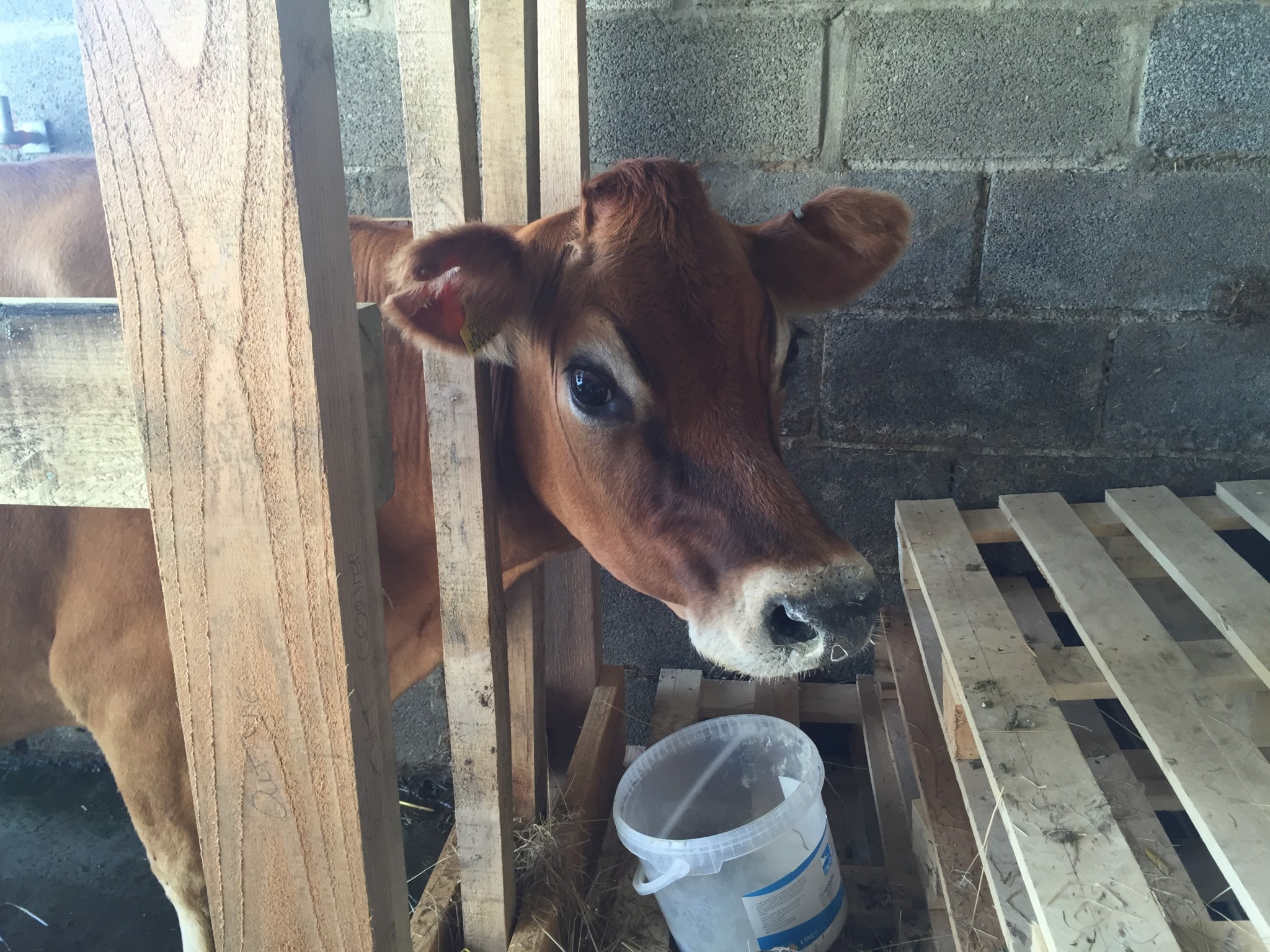In the latest update from Mountain Hall Farm – first generation farmers Alex Heffron and his partner Sam have been getting their DIY on and learning the micro dairying ropes the hard way..
August was a busy month as it saw us preparing for the arrival of our first pigs, four Berkshire weaners courtesy of a lovely smallholding around the corner, and our first Jersey cows. Wanting to build up our skill set, we decided to build the pig shelter ourselves. We found someone on Facebook selling a job-lot of timber from their own woodland which was perfect for the job. I was a failure at woodwork at school, and having been characterised by others as being bad at DIY, I had enough of a chip on my shoulder to prove something! So we found some images on line, and over the course of a week we built a pig shelter. For Sam, it was the first time to use a drill, electric screwdriver and a saw!
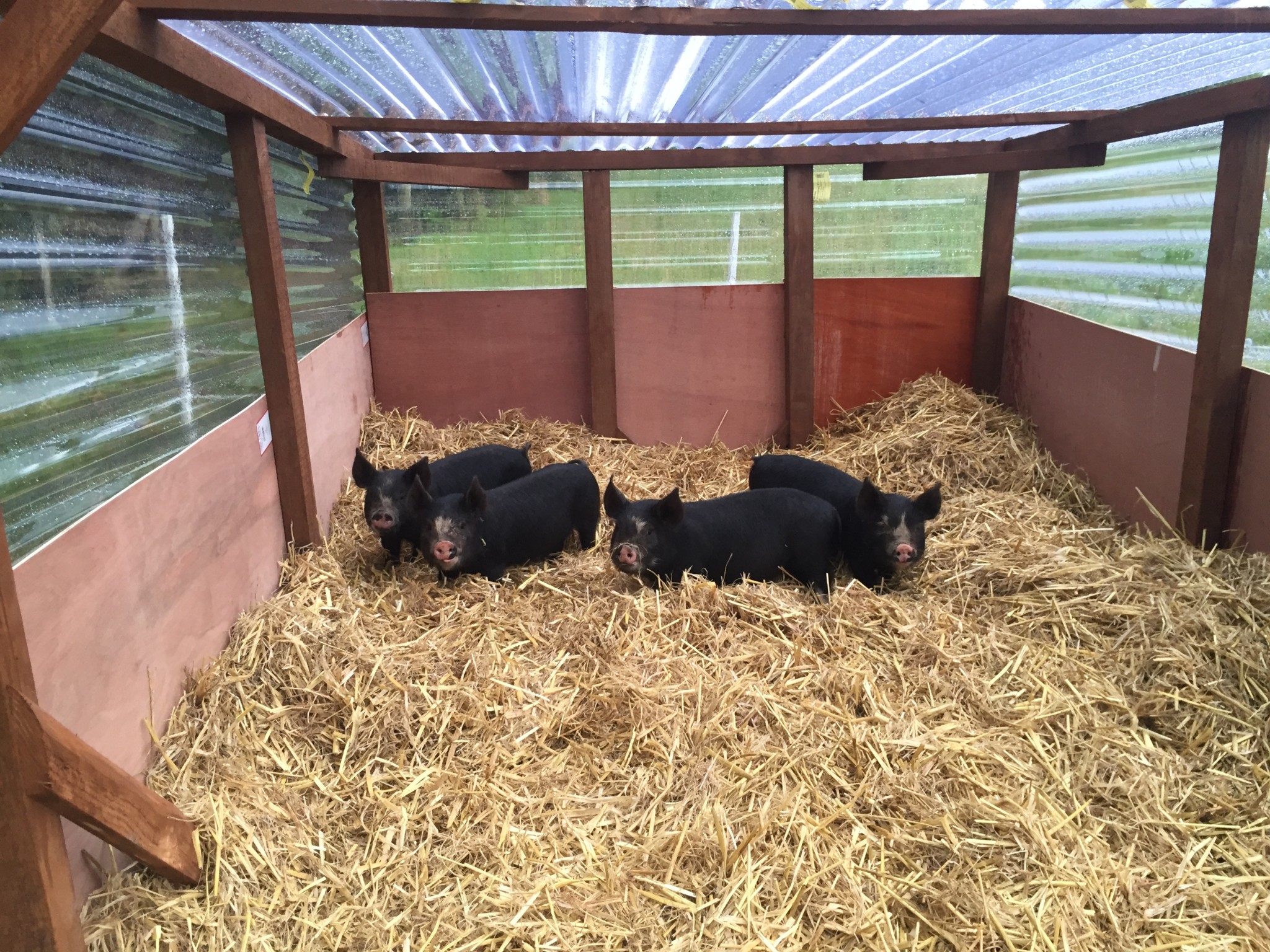
Other people who are used to being able to do DIY may not understand this, but it’s one of the proudest things I’ve ever done! I’m far prouder of this slightly wonky, but sturdy pig shelter than I am by any exam I’ve ever passed. In all it cost about £100 for the materials, and as such we saved around £100 odd quid on buying one, and skilled up in the process, which is one of our main goals for the first few years.
I was a bit nervous when we shifted it outside – would the pigs knock it down whilst scratching against its posts or would it fail to withstand the weather? Just to be sure the Pembrokeshire gods made sure that there was a 70 mph gale to test it on its first day outside – and slightly surprisingly it stayed standing! It won’t last forever but it will last at least a few years I’m sure. It’s been named the pig palace!
Then straight onto the prep for the Jersey girls. (In between all this we also had Sam’s sister’s wedding, along with the accompanying hangover…) Before this however, synchronicity once more stepped in to help us out, and around the time we were going to start looking for our first cows, we received an email from a forum we’re members of, saying that a family needed to re-home two of their house cows. Ideal. We made the long trip to Oxfordshire to visit them, and met with the family selling, who we felt couldn’t be more welcome and friendly. The cows seemed to have a good temperament, and looked healthy and in good order.
I realise now after just a few months how little we knew then but then how else do you start?! I would now look with a different eye, although, I wouldn’t’ve changed the decision we made at all. The only thing I would do differently now, which we did when we recently bought our fourth cow from a local smallholding, is to observe the cow being milked before buying. That would seem obvious now, but it didn’t occur to us before.
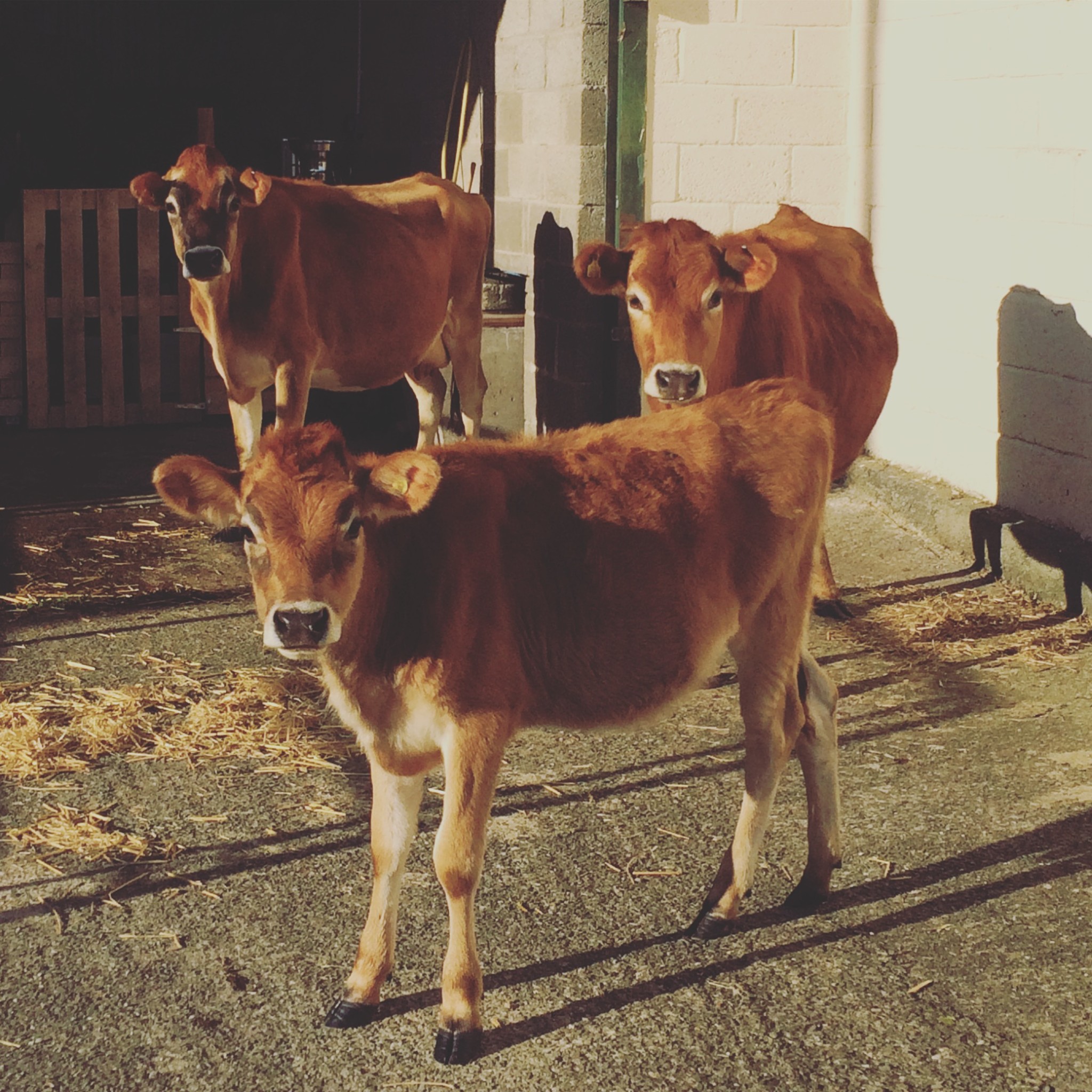
We made a deal with the family to take on their two pedigree Jersey’s. The mother, 5 years old, and the daughter just over 2 years old, both in calf to an Angus cross. Both trained, used to a http://cksglobal.net/ machine milking, electric fenced trained and both 100% grass-fed for the last 12 months or so. As we still didn’t have a trailer sorted, we arranged for someone to collect them for us, and in the meantime set about clearing a space to make a dairy parlour.
The only problem was in the space we’d chosen for the parlour we had two large bales of straw sitting there, which had to be moved and without a tractor that wasn’t easy. As this was actually the morning of their arrival – we’d been working flat out on for prepping for the pigs, and then straight after that the arrival of the girls, so we were right down to the wire. We improvised and used the recently purchased 4×4. We reversed it in, threw as much straw as would fit into the back of it, and drove around to the other side of the wall, where we offloaded it all into a massive pile (that has since come in handy for diving into off hay bales with children…). At first it was fun, but after an hour of doing it we were sneezing, scratching and sick of straw!
But before this I had spent two days building a wooden milking stanchion, to use the American term, using more of the wood we had from the local woodland. It gives the parlour an antiquated, 19th century rustic feel. Since then, with the help of Sam’s parents, we have added to the rustic, wooden theme by adding a pallet fence and gate.
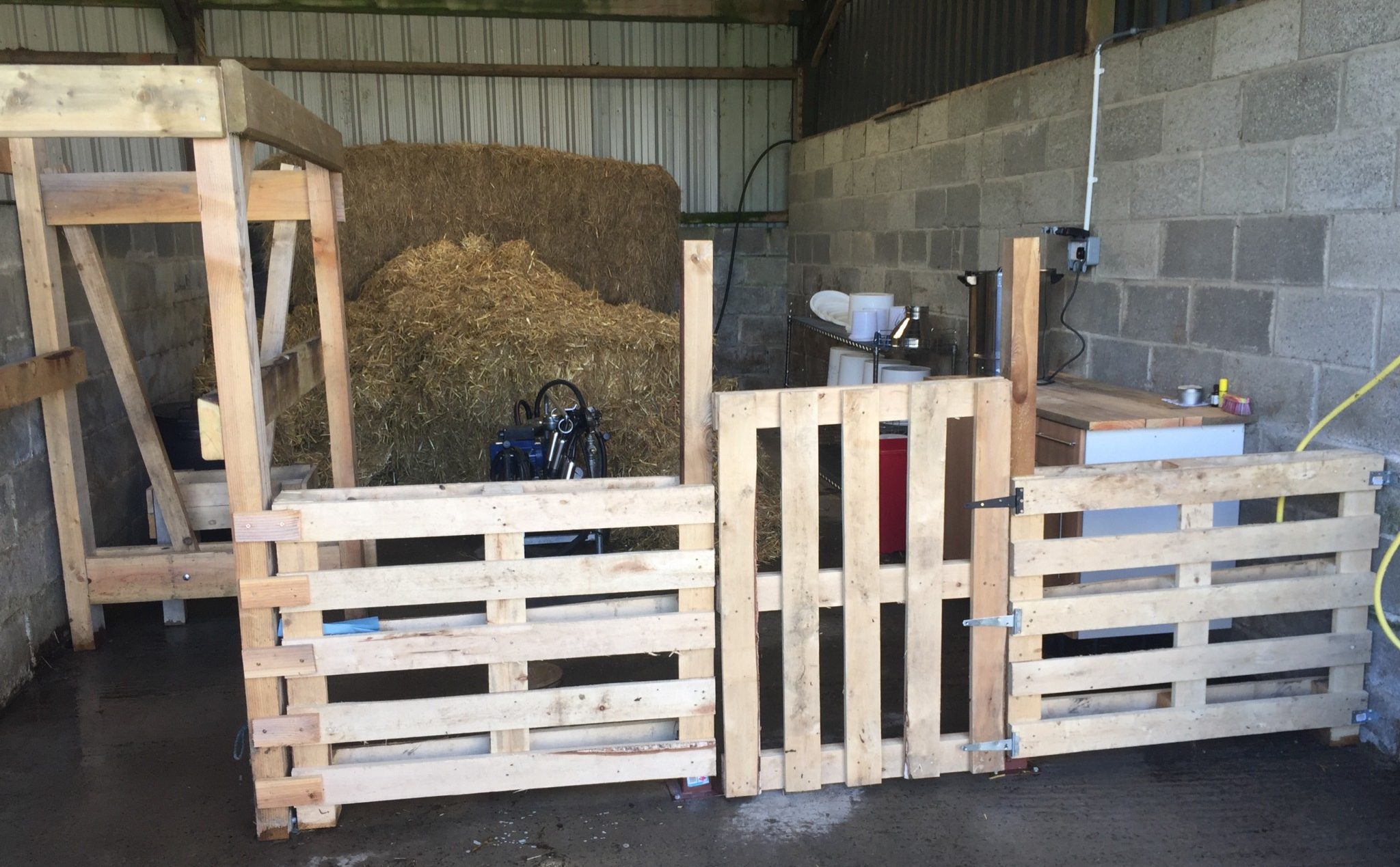
When the girls arrived we felt a real sense of completion – as if now it felt more like a proper farm. Then the learning curve really started… We already had cattle, pigs and chickens, but the dairy had been a goal of ours for several months – we really wanted the whole business to revolve around the production of raw milk. Knowing that we’d be milking these girls for perhaps ten years, and from them would build our herd and raw milk business, along with providing ourselves and others with an array of nutritious food, along with plenty of fertility for the kitchen garden and pasture to thrive on, there was a sense of what an important part of a traditional, mixed farm they are. Add to that Jersey’s are such pretty animals – surely the supermodels of the cow world! . But like I said now the learning really started – and it was a real baptism of fire that we were to face.
It was during the fourth milking that Pippin decided it was time to give us a test. When you’re new to milking cows you can feel pretty vulnerable sticking your head down by their powerful legs and hard hooves. Pippin decided to take advantage of this and started to throw her weight around! That meant stomping her feet and cutting our hands, and occasionally swinging her back leg in our direction with us both taking a few kicks to the knees and a few to the forearm as we blocked ourselves. It’s funny to think back a couple of months now, as it’s almost drifted into the unreachable past, but I can honestly say that during the first two weeks of trying to milk Pippin and Nelly there were many moments when I wondered why the hell we had bought them. We used to enjoy living here until they came, I thought. Sitting down patiently each morning and spending sometimes an hour trying to get the cluster on her took an immense amount of persistence and willpower – and taking kicks all the while didn’t help! Both Nelly and Pippin decided to test us in this way, but it was Pippin that we never managed to get a hold of. We tried tying a belly rope, in order to press upon the stifle joint that is supposed to stop them kicking but it didn’t work. We had regular phone calls with both the previous owners and a woman I consider our mentor, who’s had Jersey’s for ten years, who gave us her support generously. We’ll never know exactly why Pippin decided to be so difficult. The pattern went that I could clean Pippin’s udders, hand strip the first few squirts and get the cluster on fine, until about halfway through, after she’d decided enough of the pressure had been released from her udders no doubt, she would kick it off – not a trait, we’ve since learned, that many cows can master with such skill. We’ll never know exactly why. But we tried and tried to get it back on each time and she just wouldn’t let us – and believe me, when a cow doesn’t want you to, she won’t let you! She would stomp and kick, sometimes catching us, although we got quicker at evading her swipes. After two weeks of persisting we decided enough was enough. We sat down around the kitchen table and listed all the reasons to keep both Pippin and Nelly, and all the reasons to get rid of them. What we realised was that Nelly was progressing, and was now kicking us less, whilst Pippin was as difficult as ever.
To cut an even longer story short, the previous owners took Pippin back in exchange for the heifer and calf they were going to keep. It really was a period of soul-searching for us. That might sound dramatic but we went through more than few moments of thinking we’ll never be able to handle dairy cows – it was only thanks to the wise mentor we have, who talked us through it all, and persuaded us that this is not only not ordinary but perhaps the worst she’d ever heard of, that convinced us that it wouldn’t always be like this. Many a time, in the middle of milking one of us would be told by the other to go for a walk around the farm to collect our feelings and compose ourselves. They were a fairly miserable and challenging couple of initial weeks when we felt little joy and each morning dreaded milking.
For example, worried that they might develop mastitis because we weren’t able to milk them dry many mornings, we’d get them in again in the evening to try again, and after once again failing to get enough milk out, we would feel thoroughly demoralised. Many times a part of me wondered whether we’d have to abandon the dream of running a raw milk micro-dairy before we’d even really got going. My mind would run through the feeling of failure that it unearthed in us. Two months later I can now say that we love the routine, discipline, connection, nutrition and joy that the dairy cows bring us, but back then we felt real failures. A good lesson though that persistence, along with the right support, can get you to where you want to be in the end.
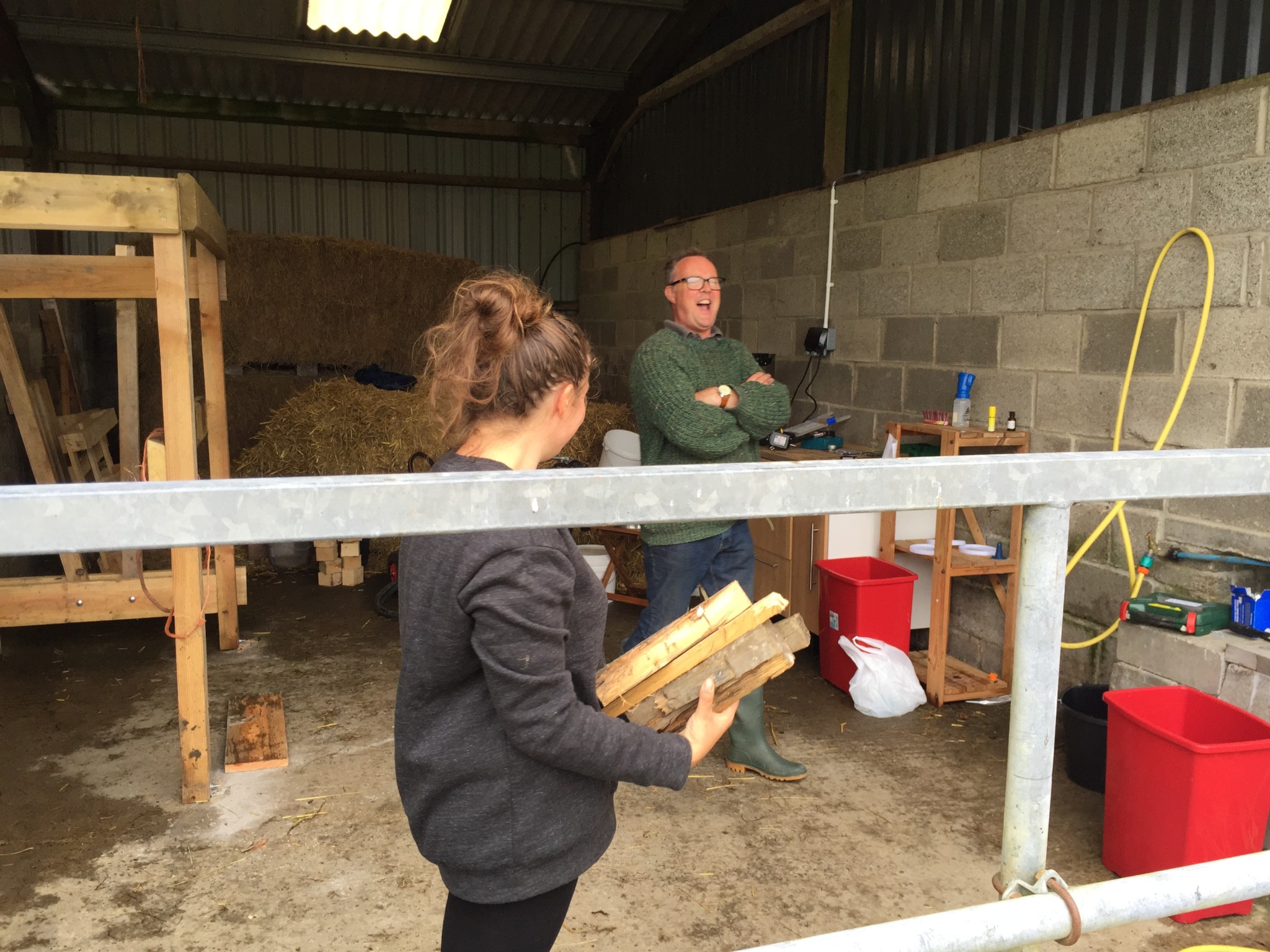
So Pippin went back, Nelly continued. She spent a week on her own, until my brother and I took our new trailer up to Oxfordshire to collect Nelly’s daughter and younger sister, now named Ruby and Holly. And ever since then Nelly has been great, and we’ve really bonded with her. She’s learnt to stop kicking, and Ruby and Holly couldn’t be sweeter. And thanks to our experience we now feel more than able to train a heifer (Ruby) next year. We literally had the cuts and bruises to show for it, but we’d earned some tough knowledge. Since then we have also added another Jersey, Neffa, from the local Lammas eco-village, who has been a delight to milk each morning, allowing us to rebuild our confidence again. Sure she dipped her head and made mini-charges at me a few times in the first week but that just served to build my confidence with these big beasts, and forced me to learn how to handle them better. It’s taken Sam a bit longer to build the confidence, but thanks to some choice words again from our mentor, Sam has now managed to master Neffa too.
We might’ve coped without too much drama if the cows were the only challenge, but no, the milking machine itself has also thrown its own tantrums. Basically, we’re now on our third machine, and even this one has had to have new vanes (helps to create the vacuum in the pump) but we’ve had many days without a machine during the last two months, which meant we very quickly had to build up the muscle endurance needed in our hands and arms to hand milk several litres of milk.
Looking back now it seems a long time ago, and sitting here with a cup of coffee with our own milk, having had a piece of toast with our own butter, it’s hard to imagine us doing all this without the Jersey girls. The discipline and routine they engender has completely changed the way we live – it doesn’t matter what day it is, the first thing, after feeding the animals and giving the dogs a quick run around, is cleaning the machine, getting the girls in, milking them, herding them back, washing down the parlour, and finally bottling and chilling the milk, followed religiously by myself each morning by a glass of fresh raw Jersey milk! I now can’t imagine how we used to live without them.
Some mornings I love to imagine myself as an ancestor 10,000 years ago doing exactly the same thing as me, sitting on a three-legged stool just a few inches off the floor milking their cows in a way that has changed little over time. We received a baptism of fire, but thankfully we passed and we can now look forward to selling 100% grass-fed, raw Jersey milk next year.



